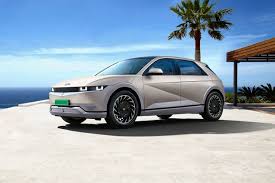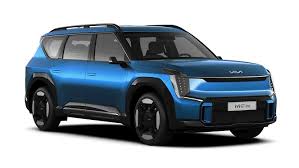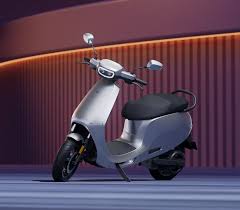Introduction
India’s EV market is on the verge of revolution. The OSM Swayamgati leads this revolution as the world’s first autonomous electric 3-wheeler. With its pioneering design and intelligent technology, it will transform urban mobility by providing a safer, cleaner, and more efficient means of city commuting and commercial transportation.
World’s First Autonomous EV 3-Wheeler:
- The Swayamgati is the world’s first vehicle of its type, with the ability to drive autonomously in cities.
- It employs sophisticated AI and sensor technologies to drive city roads without human involvement.
Affordable Price Point – ₹4 Lakh:
- Priced at a mere ₹4 lakh (ex-showroom), it is made affordable for individual consumers, fleet operators, and companies.
- Provides luxurious autonomous capabilities at a non-premium price that owner-driver and fleet operators typically would not pay for driverless cars.
Urban Mobility Importance:
- Lightweight and agile design enables it to traverse crowded city roads effectively.
- Compresses traffic and emissions by providing a zero-emission substitute for traditional auto-rickshaws and small commercial cars.
Public Transport Potential:
- It may be implemented in ride-sharing fleets, last-mile delivery, and city taxi services.
- Provides a scalable, green solution to back India’s increasing smart city and green mobility plans.
Company Background
OSM Motors, based in India, is a rising leader in the electric and autonomous vehicle market. With the vision to revolutionize eco-friendly and innovative solutions, the company marries cutting-edge engineering with pragmatic design. It aims to make electric and autonomous cars affordable and dependable for personal use as well as commercial fleets, in keeping with India’s drive towards cleaner, more intelligent transport.
 About OSM Motors:
About OSM Motors:
- An India-based company focusing on electric vehicles (EVs) and autonomous mobility solutions.
- Mission: Create intelligent, sustainable, and affordable transportation for Indian urban and semi-urban segments.
- Focus on innovation, safety, and green technology that suits Indian road conditions.
Vision Behind Developing Swayamgati:
- Unveil the world’s first affordable, practical autonomous 3-wheeler.
- Solve problems such as last-mile connectivity, traffic jams, and pollution.
- Popularize autonomy beyond premium segments in a way that benefits businesses and commuters alike.
- Establish India as a leader in low-cost, innovative, and sustainable mobility solutions.
Design & Exterior
The OSM Swayamgati features a futuristic, compact body that is ideal for the congested and fast-paced traffic conditions in Indian cities. Its modernistic looks are married with functionality so that it is not only visually appealing but also functional for city mobility. Each aspect of the exterior is designed with efficiency, safety, and comfort in mind, making it a class apart in the new EV 3-wheeler space.
Futuristic, Compact Design:
- Smooth, rounded edges and sleek modern shapes for a pleasing, modern appearance.
- Economical footprint for comfortable movement through congested streets and tight alleys.
- Urban-centric design with emphasis on agility and responsiveness.
Sleek Body, Light Weight Materials, Aerodynamic Efficiency:
- Use of high-strength, lightweight composite materials decreases vehicle weight and enhances energy efficiency.
- Slender body for reduced drag, which extends range and improves battery performance.
Autonomous Technology
The OSM Swayamgati utilizes a blend of state-of-the-art sensors, AI, and machine learning techniques. Its autonomous platform is designed not just for navigation but also for passenger protection, pedestrian safety, and integration into contemporary fleet operations.
Sensors Utilized:
- LiDAR for accurate 3D mapping and obstacle sensing.
- RADAR for sensing moving objects, traffic, and pedestrians.
- High-res cameras for visual identification of traffic lights, lanes, and signage.
- Ultrasonic sensors for near-range obstacle detection when parking and performing slow-speed maneuvers.
AI & Machine Learning:
- AI algorithms process real-time sensor input for routing, obstacle avoidance, and adaptive speed control.
- Machine learning algorithms increasingly improve efficiency by learning about traffic patterns and driving situations.
Powertrain & Performance
The OSM Swayamgati integrates a robust electric powertrain, harmoniously balancing performance and range, with running expenses kept to a bare minimum. The electric drivetrain provides smooth acceleration and silent running for Indian roads today.
- Powerful BLDC (Brushless DC) electric motor optimized for urban driving.
- Instant torque delivery for effortless acceleration from standstill.
- Motor efficiency to achieve best-in-class range without loss of performance.
Charging Infrastructure Compatibility:
- Fast charger compatible with up to 80% charge in ~1 hour.
- Home charging support through standard 15–20A sockets for overnight charging.
- Network-capable for public charging points in cities.
Optimized Top Speed, Acceleration, and City Driving Efficiency:
- Optimized top speed in city traffic: 50–60 km/h.
- Smoother acceleration with 0–30 km/h in ~5 seconds for smooth lane merging.
- Energy-efficient driving minimizes battery usage in stop-and-go traffic.
Interior & Comfort Features
The OSM Swayamgati has a well-thought-out interior that focuses on passenger comfort, convenience, and usability even in a small 3-wheeler package. From seat ergonomics to digital interfaces, everything is optimized for urban commuters and fleet passengers to provide a smooth and pleasant drive experience while making the most out of autonomous technology.
Seating Layout and Ergonomics:
- Spacious seating for three people, with generous legroom and headroom.
- Ergonomically contoured seats with cushioning appropriate for short city commutes and longer travel.
- Convenient entry and exit, particularly for senior riders or for frequent stops.
Digital Dashboard, Infotainment, Connectivity Features:
- High-resolution digital screen displaying speed, battery condition, and navigation details.
- Integrated infotainment system with media streaming, Bluetooth, and smartphone control.
- Real-time connectivity for autonomous navigation updates and ride tracking.
Climate Control or AC Options:
- Miniature air conditioning system for comfort during hot and humid Indian weather.
- Ventilation is specifically designed to maintain a continuous flow of air around the cabin.
- Energy-saving cooling to prevent battery drain.
Pricing & Affordability
The OSM Swayamgati is priced at ₹4 lakh (ex-showroom) for the passenger variant, with the cargo version expected to be priced at ₹4.15 lakh.
This price puts it as a value option in the electric vehicle space, particularly given its self-driving features. Compared to other electric three-wheelers that range from ₹3.5 lakh to ₹4 lakh, the Swayamgati’s premium is worth the money considering its sophisticated features and future cost advantages.
Launch Price: ₹4 Lakh – Comparisons with Other EV 3-Wheelers
- The Swayamgati passenger version comes at ₹4 lakh, which fits the premium end of regular electric three-wheelers.
- Its cargo version is available at ₹4.15 lakh, which is marginally higher because of added features designed for commercial applications.
- Although the Swayamgati is more expensive than certain conventional electric three-wheelers, its autonomous nature and cutting-edge technology provide considerable value to fleet operators and businesses.
Possible Government Subsidies or EV Incentives in India:
- The government of India provides the FAME II scheme incentives to electric vehicle producers and consumers with subsidies.
- These incentives can have a direct impact on lowering the initial cost of EVs, making them more affordable for businesses and consumers.
- Further cost reduction may be achieved through state-specific incentives and subsidies, depending on the location.
Market Potential & Target Audience
The OSM Swayamgati is set to capitalize on several high-growth segments in India’s changing mobility scenario, with its autonomous technology and price point.
Optimal Use Cases: Urban Transport, Shared Mobility Fleets, Last-Mile Delivery:
- Last-Mile Delivery: Electric drivetrain and compact dimensions of the Swayamgati ensure that it can easily drive.
- Urban Transport: With autonomous capabilities, it can provide secure and consistent transport for daily commuters, eliminating the need for human drivers and smoothing traffic flow.
- Shared Mobility Fleets: Due to its affordability and autonomous capabilities, it is perfect for integration into carpooling and ride-sharing services to meet the increasing demand for shared mobility solutions.
Potential for Taxi/Ride-Sharing Services:
- The emergence of shared mobility services in India means that the Swayamgati can be integrated into taxi and ride-sharing fleets as a cost-effective and green alternative to conventional vehicles.
- Government incentives and subsidies on electric vehicles also make it even more viable to implement such technologies in the public transportation system.
Competitive Advantage Over Conventional Auto-Rickshaws and EV 3-Wheelers:
- Autonomous Technology: In contrast to conventional auto-rickshaws, the Swayamgati is driverless, saving on labour and human errors.
Indian Cities:
- Tier-2 and Tier-3 Cities: As more electric vehicles are being used in smaller cities, the Swayamgati can provide sustainable transportation solutions to meet the rising demand in such areas.
Challenges & Considerations
The OSM Swayamgati is a major advancement in autonomous electric mobility, consumer confidence issues, and vehicle conformity to Indian road conditions. Overcoming these challenges is important for the successful inclusion of autonomous vehicles in the Indian transportation network.
Regulatory Approvals for Autonomous Vehicles in India
- India’s legal structure at present, which is contained in the Motor Vehicles Act of 1988, does not provide for autonomous vehicles since this was formulated before the emergence of such technology.
- A lack of legislation for autonomous vehicles leaves ambiguity with respect to liability, insurance, and operational standards.
- There is a need for the government to formulate and enact regulations covering the peculiar dimensions of autonomous vehicle operation, such as safety standards and data privacy issues.
Road and Traffic Adaptability in Indian Conditions:
- There are varied and frequently random traffic patterns on Indian roads, which include jaywalking, reckless driving habits, and unmaintained road infrastructure.
- Self-driving cars need to be provided with sophisticated perception systems that can deal with such varying complexities.
Consumer Acceptance:
- Surveys apprehension regarding safety, dependability, and the capability of the technology to manage intricate driving situations.
- Cultural attitudes, including an affinity for human control and distrust of new technology, can slow adoption.
- Public acceptance and trust must be created by education, open communication, and demonstration of the safety and benefits of the technology for broad-scale acceptance.
Charging Infrastructure Readiness for Mass Adoption:
- India has sparse EV charging infrastructure and uneven coverage, with most regions having fewer than a dozen public charging stations to support the use of electric vehicles on a large scale.
- In urban areas like Pune, there have been reports of delays in the installation of charging points and low rates of usage due to problems like power supply coordination and public awareness.
- For autonomous electric cars to become realistic, particularly for commercial use, there must be a strong and affordable charging infrastructure to support operational efficiency and cut downtime.
Competitor Comparison
The OSM Swayamgati is a unique offering in the Indian electric 3-wheeler segment with its autonomous driving feature, which has yet to be offered by most rival models. Traditional EV 3-wheelers emphasize prices and simple electric mobility, whereas the Swayamgati offers sophisticated technology at affordable prices, geared to revolutionize urban transport and last-mile delivery solutions.
Comparison to Other EV 3-Wheelers in India
- Mahindra Treo: At ₹3.23 lakh to ₹3.38 lakh, the Treo comes with a maximum range of 130 km in a single charge and is ideal for short trips within cities. It does not support autonomous driving.
- Kinetic Safar Smart: With a price that begins from ₹2.18 lakh, the Safar Smart is among the cheapest electric 3-wheelers available, perfect for commuting very short distances. It does not feature autonomous driving.
- Tata Electric 3-Wheeler: Tata Motors has launched electric 3-wheeler offerings such as the Tigor EV-based e-rickshaw. Prices and range specifications differ, but these products lack autonomous driving.
Autonomous Feature Differentiation:
- OSM Swayamgati: Loaded with Level 4 autonomous driving features, incorporating LiDAR, RADAR, cameras, and ultrasonic sensors for navigation and detection of obstacles.
- Mahindra Treo, Kinetic Safar Smart, Tata Electric 3-Wheeler: None of these models currently features autonomous driving functionality.
Price vs Performance Analysis:
- OSM Swayamgati: With a price tag of ₹4 lakh for the passenger model, it has sophisticated autonomous features at an affordable price.
- Mahindra Treo: Has a range of 130 km but without autonomous features.
- Kinetic Safar Smart: Offers basic electric mobility at a lower cost, but without autonomy.
- Tata Electric 3-Wheeler: Performance details differ by model, but none of them have autonomous driving currently.
Conclusion
The OSM Swayamgati is India’s urban mobility space, combining best-in-class autonomous technology with the convenience and practicality of an electric 3-wheeler. Its price point is ₹4 lakh.
The Swayamgati provides businesses and mass commuters alike with an affordable, environmentally friendly, and secure alternative to traditional auto-rickshaws and fleet vehicles. With its arrival, India is poised to be at the forefront of a future in which driverless, eco-friendly cars are no longer a vision but a reality, paving the way for India to spearhead the global revolution in autonomous and electric transport technology.
FAQs
- What is the speed of the OSM Swayamgati?
The Swayamgati is designed for intra-city mobility at a top speed of 50–60 km/h, ensuring safety on city roads and delivering cost-effective transport.
- How long does it take to charge completely?
- The battery charges up to 80% in about 1 hour.
- With home charging, the time taken is about 6–8 hours, making overnight charging convenient.
- Is it safe for Indian roads?
Yes. The Swayamgati is engineered with state-of-the-art sensors (LiDAR, RADAR, cameras, ultrasonic) and AI algorithms to drive through complex urban environments.
It also has redundant safety features, pedestrian alert, and reinforced passenger compartments for utmost safety.
- Can it be used for commercial fleet services?
Yes, definitely. Its autonomy, cost-effectiveness, and ruggedness make it perfect for taxi services, ride-hailing, delivery fleets, and last-mile logistics operations.
- When will deliveries in India start?
The launch date for official deliveries is set to start by the end of 2025, with initial supplies in the major cities. Fleet and commercial models might be rolled out soon after the passenger models.




